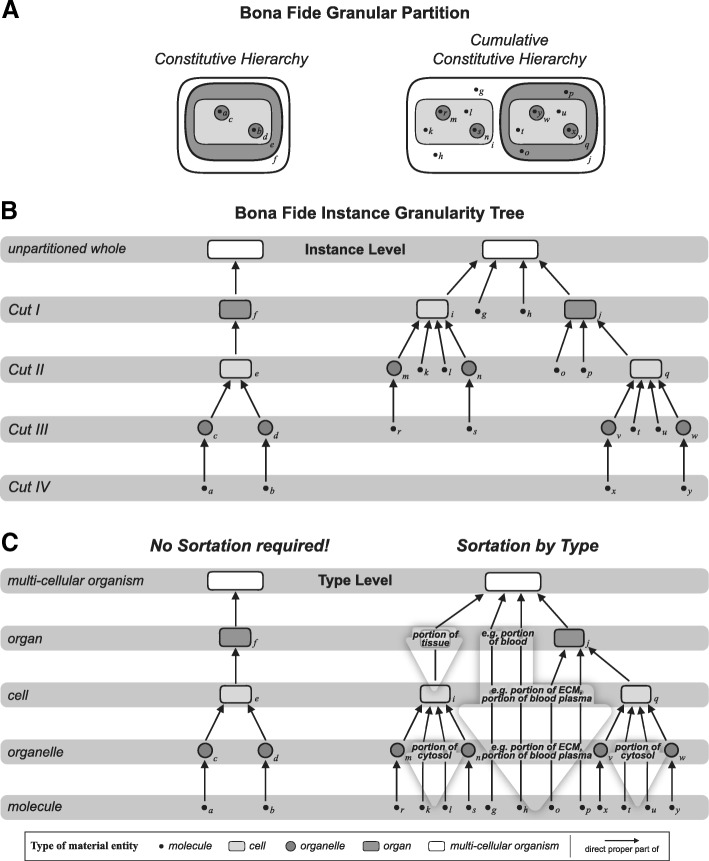Fig. 2.
Instance Granularity Tree and Type Granularity Tree based on bona fide Granular Partition for Constitutive and Cumulative Constitutive Hierarchies. a Compositional partitions of a constitutively and a cumulative-constitutively organized idealized multi-cellular organism into their constitutive bona fide object parts. Four corresponding partitions are shown. Left: into organs (f); cells (e); organelles (c, d); and molecules (a, b). Right: into organs with cells and extracellular molecules (i, j, g, h); cells with organelles and extracellular and cellular molecules (q, m, n, o, p, k, l); organelles and molecules (v, w, t, u, r, s); and molecules (x, y). b The four compositional partitions from A) represented as a bona fide instance granularity tree. Each partition constitutes a cut in the instance granularity tree (Cut I–IV) and thus an instance granularity level. Left: Instances of the same type of material entity do not belong to different cuts and thus are restricted to the same level of instance granularity. Right: Instances of the same type of material entity, for instance ‘molecule’, belong to different cuts and therefore to different levels of the respective instance granularity tree. The extension of the class ‘molecule’ thus transcends the boundaries between instance granularity levels. c Left: The bona fide instance granularity tree can be directly transformed into the corresponding type granularity tree—no sortation of any parts across the boundaries of granularity levels required, because the topology of the bona fide instance granularity tree is identical with the bona fide type granularity tree. Right: The bona fide instance granularity tree cannot be directly transformed into or mapped upon the corresponding type granularity tree. However, by following the simple and intuitive rule that a type must occupy the same granularity level as its finest grained instance (i.e., sortation-by-type [58]) and by applying the concept of granular representation (see further below), one can transfer the instance granularity tree into a corresponding type granularity tree. (Figure modified from [87])

